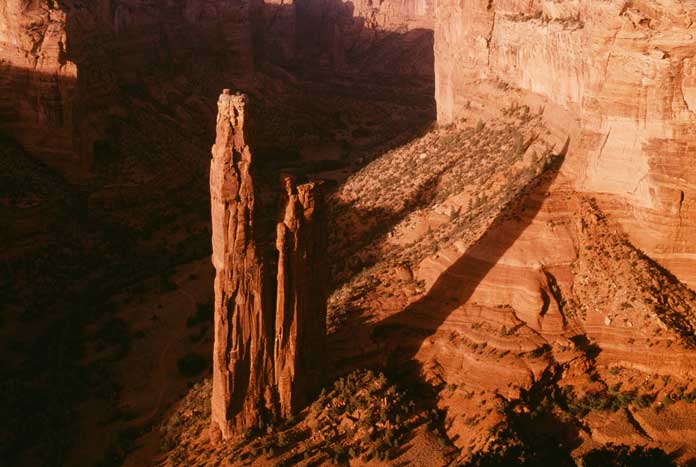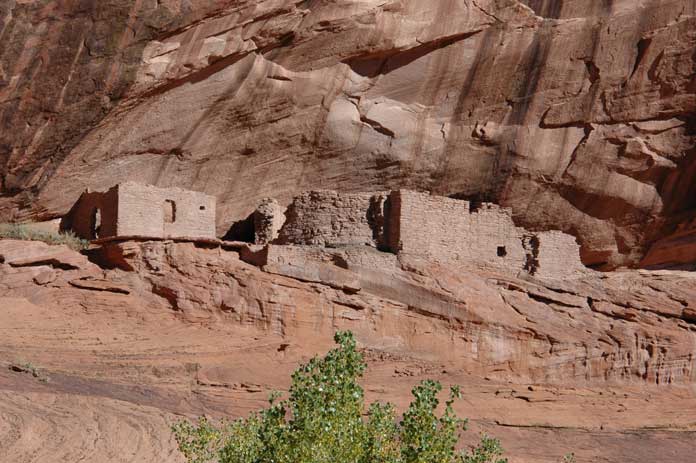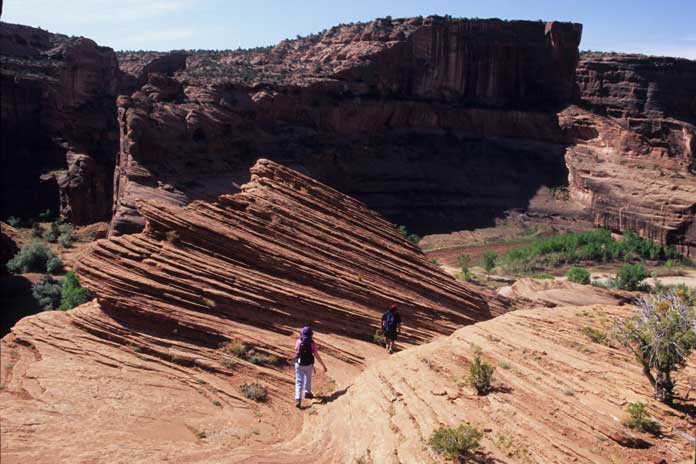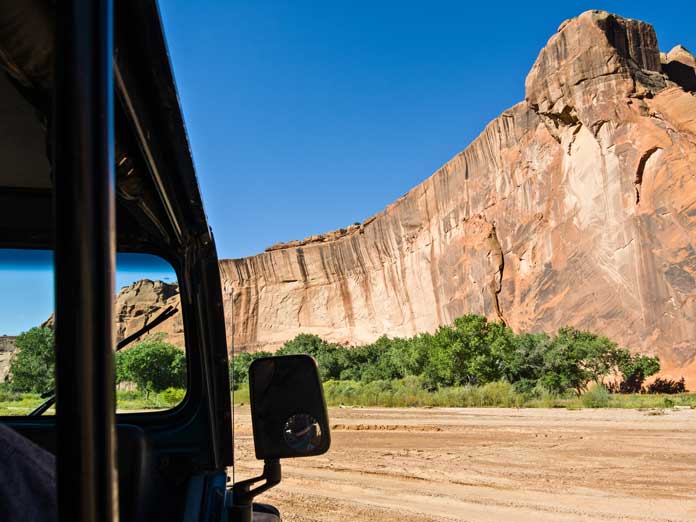Canyon de Chelly National Monument is found in northeastern Arizona within the boundaries of the Navajo Nation. The name “Chelly” is derived from “Chelley” which means “canyon.” This national monument is entirely owned by the Navajo Nation and is the only unit in the National Park Service that is owned and operated in this manner. Approximately 40 Navajo families still reside in the park and access to the floor of the canyon is not allowed unless you go with park staff or a Navajo guide. The huge canyon is very picturesque and draws thousands of people each year to see the beauty of the area. There are three major canyons in the park that were created by streams from the Chuska Mountains located nearby. Stunning scenes, ancient ruins, and Native American history are the major features and attractions of this beautiful national monument that is considered the “heart” of the Navajo Nation.
Table of Contents
Spider Rock
Spider Rock is one of the most amazing geological features in the park, if not the state. It is a huge spire made of sandstone that rises 750 feet in the air, with a shorter spire located right next to it. It has been featured on T.V. and in films. According to the Navajo people, the belief is that the taller one of the two spires is Spider Grandmother’s home. Spider Grandmother is the creator of the world according to Navajo religions and beliefs. Spider Grandmother was thought to have spun a web that was covered in dew and threw it into the sky, which became the stars at night.

The Battle of Canyon de Chelly
The Battle of Canyon de Chelly was led by Colonel Christopher Carson who defeated the Navajo in this fight in the Navajo Wars. It was considered the final military effort between the Americans and the Navajo people. The settlements on the canyon were destroyed by Colonel Carson, and his men and many Navajos were captured or fled. Carson believed in capturing the Navahos and not killing them as he wanted to treat them as humanely as possible. The result of this final battle was what is now referred to as the “Long Walk of the Navajo,” who was moved from their home in Canyon de Chelly to the Bosque Redondo reservation in New Mexico. After four years, the Navajo were allowed to return to their homeland, and many families still live in the canyon today.
Ruins
Although many simply view the stunning canyon from the rim, there are tours visitors can take that can lead to some amazing ancient Puebloan ruins. The “White House Ruins” are remarkable, tucked away under the base of one of the sheer rock walls at the base. The name is derived from the white plaster used for part of the upper dwelling. The largest ancient dwelling is a preserved village known as Mummy Cave. With over 60 rooms, ceremonial rooms and different colored plaster used, it is one of the most profound and impressive ancient structures left. Boulders with ancient carvings and drawings on them can still be seen, and there are more ruins in the canyon such as the Antelope House ruin and the First ruin. Explore the canyon with a guide to see these amazing features for a once-in-a-lifetime opportunity.
Scenic Drives and Overlooks
There are two scenic drives visitors can take. Both are paved and travel along the north and south rims. Allow time to stop and see some or all of the ten overlooks that provide spectacular views of the canyon below. The south rim drive is best for afternoon and sunset photos, while the north rim drive is best for sunrise and morning view due to the light. The sunlight illuminates the canyon walls to oranges and reds, proving excellent photo opportunities. The overlooks are all open year round, and both these and the scenic drives are free to the public. There is also no fee to enter the park, making it a popular place to sightsee and visit.
Hike the Red Canyon
There is one public trail that visitors can hike in the park. This is due to the sensitive nature and access to the canyon floor that requires a guide. The public trail starts at the white house overlook along the south rim. The trail takes about 2 hours round trip, and visitors can hike down about 600 feet and back up through a switchback trail to the famous White House ruin. There are restrooms available at both the top and bottom of the trail. Any other ruin visits, hikes along the canyon floor, etc. will have to be scheduled through a tour or Navajo or park guide to be respectful of the people still living in the canyon.
Tour the Canyon
Canyon tours do cost extra, but they are a great way to see what many people usually don’t usually get to, and that includes ancient ruins and views from the canyon floor. Visitors can choose from horseback tours, vehicle tours, or hiking tours for further exploration. These tours require a backcountry permit and a guide to participating. March through November are the busiest months and reservations are recommended to secure your place on one of the tours. Jeep and horseback tours are the most popular, and the park website has a list of vendors to choose from. Try one of these for the unforgettable scenery of ruins, Spider Rock and much more.
Camp in the Park
There is one campground in the park for those that wish to do so. The Cottonwood Campground has sites that are first-come, first-serve. These sites have no hookups or showers available. This is an inexpensive way to stay in the park if you want to spend a few days doing tours and hiking. Fees are charged, but they are minimal. Experience the Arizona outdoors and the beautiful Canyon de Chelly National Monument by staying right in the park’s campground.
Preservation of an Ancient Time
In 1931 President Herbert Hoover authorized the canyon as a national monument. He wanted to preserve ancient archaeological resources that date back over 5,000 years ago that lay in and around the canyon itself. The National Park Service and the Navajo Nation work together to protect and manage this amazing place. With over 84,000 acres and Navajo families that have remained in the canyon just as their ancestors did, provides both a historic and cultural significance. The canyon today still contains homes, farms, and livestock of those who remain and call it their home. Experience the beauty and history of this important place and enjoy the views of Canyon de Chelly National Monument.



